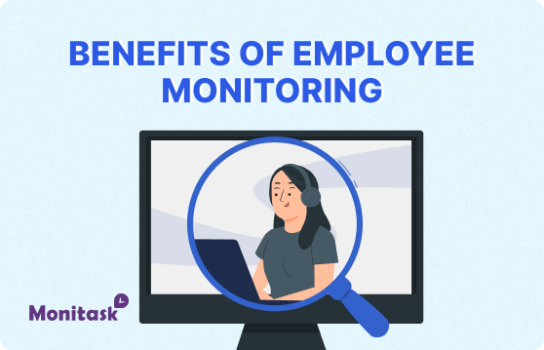

Considering how a lot of companies outsource a large portion of their work to teams located in a different country or continent, it would be a good idea to find ways to motivate this remote workforce. Today, there are numerous reliable companies that you can outsource your work to, however, in order to tap into their full potential, you need to show them respect.
Another type of remote workers are people who simply work for you online as a full-time job. These arrangements are a good way to discover new talents, and to train employees before they are hired to actually work in the office. Both remote employees and outsourcing companies are eager to please, but they also need further motivation, in order to know they can fully invest their efforts into helping you.
In the following article we will discuss some methods of motivating your remote employees. This way you can ensure their performance does not drop, and that they actually have a pleasant time collaborating with you.
Communication

Communication is an important factor in any line of work, even if your employees are working from their homes, because they are prevented from coming to work. Luckily, thanks to skype, VPN, knowledge base management tools, social networks and emails, it is incredibly easy to communicate with any of your remote workers as if they were right there at the office.
When communicating, you don’t need to simply check up on someone to see what they are doing. If you want to measure whether someone is working at full capacity, there are other more subtle ways to do so, and calling someone constantly might seem a bit offensive.
When you are communicating with your workers, use this opportunity to show them you care. Ask them if they are able to complete the project on time, and if they might need something to help them out, or any additional information.
You can use this opportunity to give them a bit of reassurance, and probably the most important thing, to inform them if there are any changes or alterations, and to negotiate about further payment. All of this takes up approximately 5-10 minutes and it has positive effects on one’s performance, so make sure you talk to your remote employees frequently and openly.
Positive reinforcement

Increasing motivation with positive reinforcement is a technique that is applied from a very young age. Since it is a method that works in almost 100% of scenarios, there is no reason not to use it. If you are worried that it might seem patronizing if you use this technique, don’t. If you do not force it, it won’t have negative effects.
Use positive reinforcement when an employee completes a difficult project, or performs above your expectations. Moreover, you can use it if your employee is able to complete the project at a satisfying level, and well ahead of the deadline you have set. It doesn’t have to be a verbal reinforcement and, in most cases it shouldn’t be.
Since we are talking about remote employees, you can send a higher payment, or send a gift basket, or a bottle of expensive wine etc. Make sure you leave a note that congratulates them for their exceptional work.
This is a form of employee incentive program, and it sets an example for other remote and in-house employees. People who are rewarded adequately for additional efforts are more likely to continue to do so in the future. Moreover, for remote workers this kind of reward makes it a pleasure to collaborate with you, so, if you have valuable remote employee, this is one of the best ways to secure their loyalty.
Detail oriented instructions

For remote workers it is more difficult to complete a task exactly as you planned, since they are not present at the office. We have mentioned how you can make their job easier and more pleasant with quality communication, however, you also need to be very specific regarding the details in your task assignment.
For remote workers, it is difficult to fully invest their efforts in a project if they are doubting their every move, and this doubt is born out of a lack of details. In other words, if you are specific and if your remote worker is confident and clear about what they need to do, they can simply follow the instructions and will be motivated to work at full capacity.
They don’t need to second-guess their moves, and they don’t need to worry about misinterpreting something, or you returning the project for improvements. With detailed descriptions, you can eliminate the barrier caused by distance, and ensure your remote workers perform much better. This is both better for you and for them, and it again turns you into an employer they are fond of working with.
Using monitoring tools

One of the major issues with remote workers, is knowing whether they have actively worked on their projects. After all, if you are prepared to reward hard work, they should be ready to be honest about their work hours.
When negotiating with remote workers, you can never know how much of their time they have committed to the project. You can be open to negotiations and even increase pay rates if the project took longer to complete, but you still need to be sure they have worked actively on their assignment.
You can use monitoring tools to eliminate this possibility and to ensure your remote workers are actively working on your project. With monitoring tools, you can track the time that it took to complete the project, and the accuracy of that tool is supported by screenshots of your employees’ computer.
So, you can receive a random screenshot every five minutes to see what is happening on your employee’s screen, how far he or she has progressed since the last screenshot etc. Since the worker knows he or she is being monitored, he or she will also be motivated to continuously work on the project and limit distractions.
They are free to take short breaks, of course, because no one will make a big deal out of one screenshot of a social network page, but this will encourage them to keep working on the project continuously, instead of starting and stopping all the time. This saves a lot of time and makes people more productive.
Constructive feedback

In the event that you need to criticize the end result, it is imperative that you give your remote employees detailed feedback. It is not uncommon for mistakes to be made, and flawed work does not directly imply incompetence; it more likely points to miscommunication.
You should tell them exactly which elements of their draft you did not like, which of the elements were misinterpreted, and where improvements are needed. It takes some time to create a common ground and to adjust to one another.
So, when you are willing to give them a chance to learn from their mistakes, your remote workers are more likely to perform better. If you leave them with minimal feedback, it only gives off the impression that you are not interested in collaborating with them.
Make them feel like they are part of the team

One of the best ways to motivate remote workforce is to welcome them in your ranks, sort of speaking. All of the suggestions so far, with communication, reward and constructive feedback, are in fact capable of making them feel like you are genuinely interested in future collaboration.
You can also ask them to attend a business meeting if they have been working for you long enough, and you can ask them to join you for celebrations. You can use skype call to hold the meeting, and if they are not too far away, they can even attend office parties and get to know the people they are collaborating with online.
You do not need to do this immediately, but after a long period of successful collaboration, you can feel free to include them. This is a really nice gesture, and you are bound to motivate them even further.
Regular payments

Finally, one of the more obvious suggestions, but one that employers tend to neglect. When you hire someone, immediately put some money on the side to pay your remote workers. The payment should never be late, but as we all know, there are certain unforeseen circumstances that can result in a delayed payment.
People who work for you at the office can be informed about this delay and reassured the money will arrive eventually, but for remote workers this looks highly unprofessional and it will cause them to doubt whether you are someone they should work with in the future. So, ensure that you can always pay your remote workers on time, especially during the first couple of projects.
As you can see, it is not too difficult to keep a remote workforce eager to please, and most of these techniques are applicable to your office workforce as well. Thanks to the advancement in technology, we are now able to collaborate with people all across the globe, and the pool of experts you can rely on is really vast.
Do not overlook these possibilities and feel free to utilize these techniques to ensure a mutually beneficial relationship and good working conditions.


